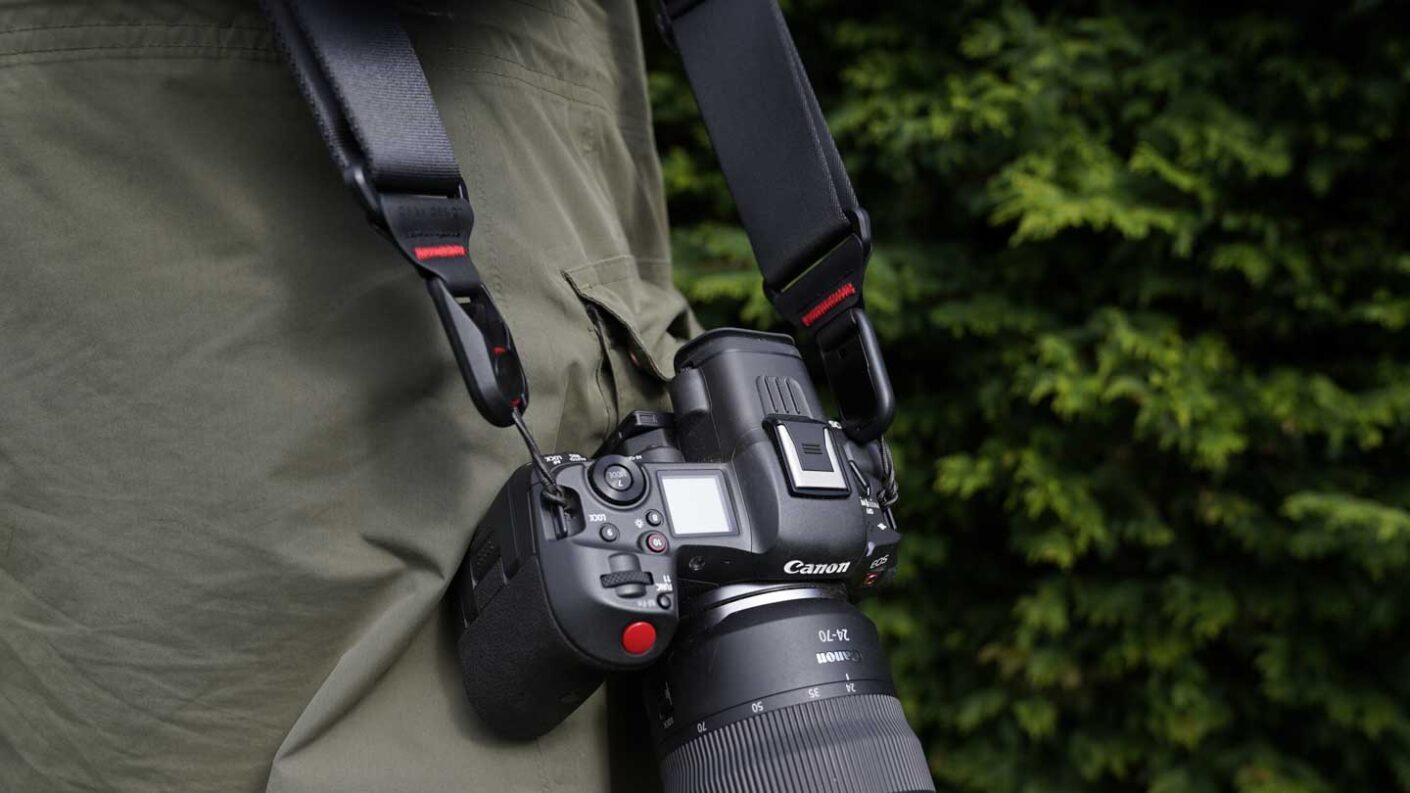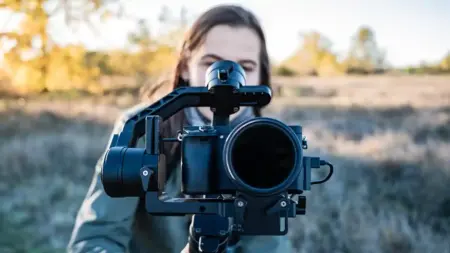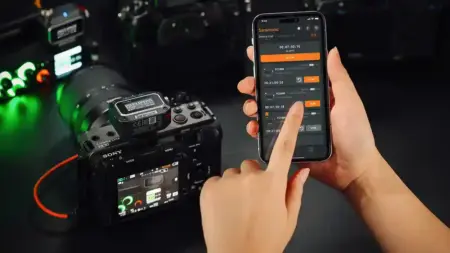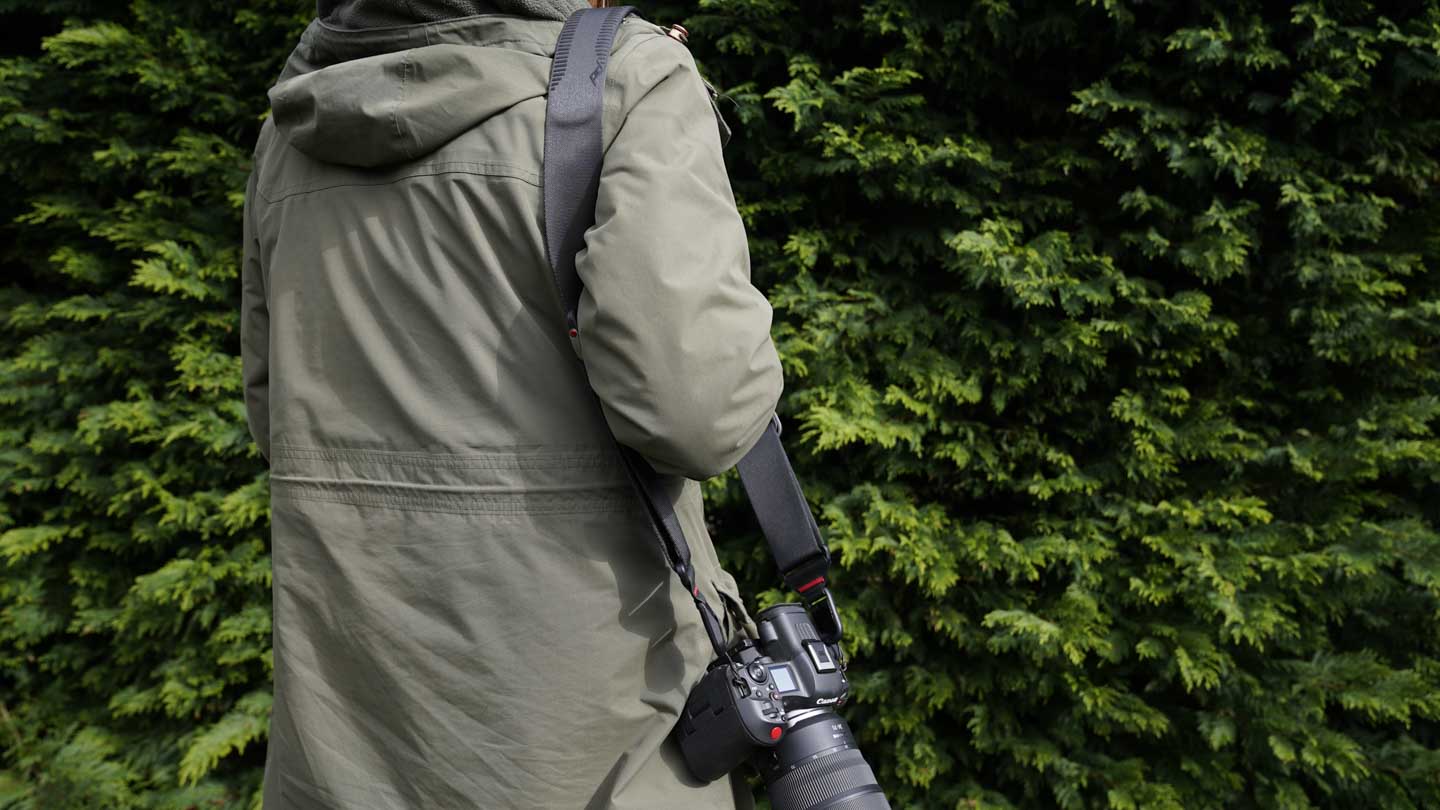The Slide is all part of the Peak Design Capture system and features the V3 slim line anchors that enable the strap to be attached and removed from a camera at speed.
To fit the strap, you have several options; the first and most obvious is to use the camera’s strap lugs. Simply loop in the anchors and then click the strap to the plastic discs. Once in place, the connection is solid, and there’s absolutely no way that the link between the anchors and strap can separate without human intervention.
The connector is then looped into the main strap with the 42mm wide soft seatbelt-style webbing. This webbing is by no means similar in feel to your standard car seatbelt, although it does look very similar. On touch, you can feel that it is slightly thicker, and far softer but does retain the smooth finish, which is a major feature of the slide strap products.

The smoothness of the material gives the strap the slide name, as it smoothly slides across fabric when you lift your camera to take a picture.
That smoothness is a real benefit and makes a surprising difference in use compart with conventional fabric straps and stops the standard grip of a camera strap from sticking or catching on your clothing.
If you think that’s all well and good but wonder about the times when you’re not taking pictures and don’t want the strap to slide off your shoulder? Then you don’t have to worry; flip the strap over, and the other side features small silicon grips. These silicon strips gently grip the fabric of your clothes and stop the strap from slipping. Because of the design of the anchors, flipping the strap is nice and easy; the only issue is the quick adjusters then face your body. so are tricker to access but far from impossible, if needed.
In the section with the silicon, grips has been incorporated some added padding to help ensure that the strap, even when weighted with larger cameras, is comfortable. This padding is slim but works well and does improve the comfort along with the wider strap. The one thing I would say about the padding is that you need to give it time to bed in.

The quick adjusters essentially enable you to adjust the length of the strap from 99 to 145cm, so more than adequate for most individuals.
After using the strap, the one issue that I had was the fact that there are two of these quick adjusters, one on the left. the other on the right. This obviously makes it nice and easy to adjust with either hand or both, but the way that I used the strap attached to the strap lugs meant that I could have one quick adjuster lower than the other and that looked out of balance.
Really you should adjust both at the same time so that they align, or just not be bothered by something that has no actual effect on the use of the strap, but still. Would one have done? One might not be symmetrical, but I find myself OK with that unbalance.
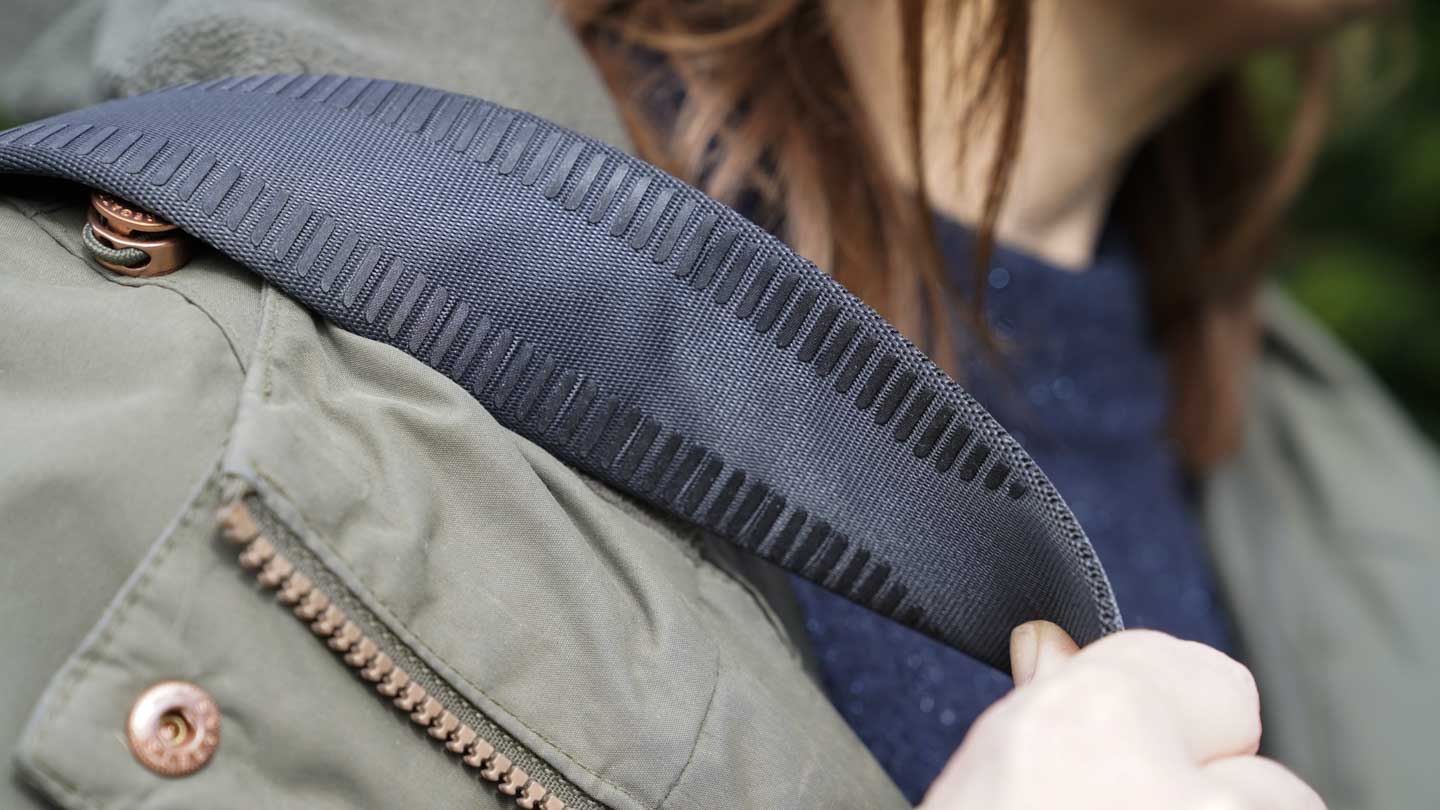
The other option for attaching the strap is to loop the anchor connectors over the 1/4-inch screw of your tripod’s baseplate before it’s bolted into position. The other anchor is then looped through one of the camera’s strap lugs before connecting the strap. This gives a much better position for the camera when carrying in a sling fashion rather than having the camera strap hanging from your neck like a tourist.
If you don’t use a tripod, then Peak Design also include an anchor mount in the box. This small piece of metal bolts to the base of your camera and is designed to stay there. It’s a really nice idea, and the slimline design works well.
Ultimately at the end of the test, there are several take-home points from using the Slide. The major one is that it’s a vast improvement over a standard strap and well worth the investment.


